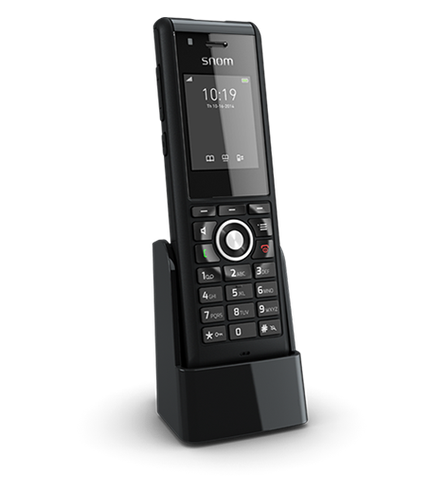
Wireless VoIP endpoints allow you to transmit digitally formatted calls through an internet connection. At present, there are two wireless technologies competing within the business communications space. The first, and most well-known across Europe is the “DECT” phone. The “Digital Enhanced Cordless Telecommunications” form uses the standard wireless technology that you’ve become familiar with in things like baby monitors and some wireless headphones.
On the other hand, “WiFi” VoIP phones are some of the latest innovations on the market, which use a WLAN network to connect a call. Whether is better than DECT is a debate that has been raging in the UC sector for some time now. Here, we’re going to tell you everything you need to know about each option.
What is DECT?

The traditional wireless option that allowed us to move away from the standard analogue phones used in businesses and homes of the past, DECT is a digital telephone technology that made the cordless phone a reality. Digital Enhanced Cordless Telecommunications is incredibly common in communication environments today. It’s formerly known as the Digital European Cordless Telecommunications standard because it was designed and implemented by companies in the EU. However, DECT is used around the world.
Just like another important standard, known as “GSM” or the Global System for Mobile communication, DECT phones access Time Division Multiple Access (TDMA) to transmit radio signals to phones. While GSM is generally optimised for mobile travel in larger areas, DECT is designed for smaller spaces, with a greater number of users. There are five primary applications for DECT phones:
- The Wireless Local Loop: Users in a neighbourhood served by a telephone company local loop can connect instead through a cordless phone that exchanges its signal with a neighbourhood-wide This would simply involve plugging a standard telephone into a fixed access unit
- Home cordless phones: Homeowners can install one single-cell antenna in a home to use for a range of cordless phones
- The cordless PBX: A company can connect to their wired telephone company and distribute signals for that connection by radio antenna across a range of telephone users within the same business environment. Each user can have their own number
- Cordless Terminal Mobility: The arrangement that businesses use for their cordless PBX can also be used by services that deliver cordless phone numbers to individual subscribers
- DECT Internetworking: DECT can interact with the GSM standard to give users the freedom to move with a telephone from outdoors to indoors
What is a WiFi VoIP Phone?
A WiFi phone is another type of cordless phone which uses “WLAN” to create communication connections. WiFi phones are gaining more popularity as of late because they can sometimes be cheaper to use, and easier to implement than a standard DECT phone. However, some vendors believe that WiFi solutions don’t offer the same level of connection quality as DECT. Since WiFi is a packet-based technology intended for communicating data, it’s not necessarily built for wireless phones.
The quality of connection you can access will depend on several factors. For instance, you’ll need to make sure that you have the right level of bandwidth to ensure your phone can handle the traffic being pushed through the WiFi connection. Internet routers capable of handling wireless VoIP WiFi solutions can be more expensive, but it is necessary for all companies to maintain clarity and consistency of quality.
For most organisations, the focus when purchasing a WiFi phone will be “QoS“, or the Quality of Service protocols. Unlike standard DECT phones, WiFi connections are not designed traditionally for voice signals. Because they naturally prioritise data, WiFi phones can sometimes be the cause of interruptions and low quality. However, QoS can ensure that WiFi phones prioritise voice data, delivering better overall call quality.
For companies seeking better cost-saving opportunities, WiFi VoIP phones can be a suitable solution, and they’re also available for integration with a greater range of technology. However, if you’re looking for reliability and quality of audio, then you’ll need to make sure that you either stick to the QoS standard or use a DECT phone.







